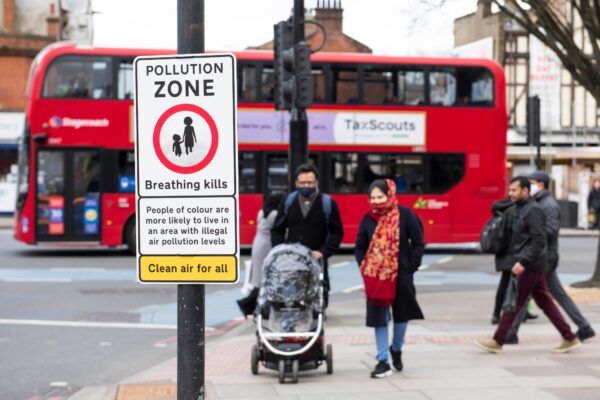In March 2023, the latest IPCC report delivered a “final warning” on the climate emergency, urging countries worldwide to act decisively and quickly to reduce carbon. In the face of doom-laden headlines, climate anxiety can feel overwhelming and debilitating. But there is hope and inspiration to draw from in the great progress made by environmental movements worldwide.
Collective action across countries led by diverse groups of people can lead to extraordinary successes. Read on for three environmental success stories.
The campaign to heal the ozone layer
There’s no better place to start than the biggest environmental success story of recent times. In the early 1980s, scientists discovered a major hole in the ozone layer. Chemicals used in cooling devices and aerosols had destroyed the ozone layer, which protects the earth from the sun’s most harmful ultraviolet rays. Experts warned that the ozone hole could seriously harm human health and the environment. A global movement sprung up in response to the crisis.
By the late 1980s, collective campaigning and advocacy led to a universal treaty covering the production and use of substances that harm the ozone layer. The Montreal Protocol applied to all UN member states and helped to eliminate 99% of ozone-depleting chemicals.
What can we learn from this movement?
- Securing a strong scientific consensus on the need to heal the ozone layer laid the groundwork for a campaign that could then move beyond the scientific community.
- Scientific evidence was key to convincing policymakers to act.
- Global problems need global solutions. International treaties are effective if implemented worldwide.
- Fast action is possible! From the ozone hole’s discovery in 1985, the signing of the treaty in 1987 and implementation in 1989, the movement acted fast and changed the world.
An international treaty to protect the ocean
We depend on the ocean for half of the oxygen on earth. The ocean provides food and nutrition for billions of people and employment for millions. It’s our biggest carbon sink. But over 10% of marine species are at risk of extinction. Climate change, overfishing, plastic, noise pollution and shipping traffic harm life in the seas, which impacts our ability to produce food, reduce carbon and earn livelihoods.
Over half of the ocean falls beyond national jurisdiction, meaning it’s afforded little protection. Only 1% of the world’s high seas was protected under an international agreement signed 40 years ago. But in 2023, the movement to protect the world’s oceans secured an astounding historic agreement. After nearly 20 years of negotiations, nations agreed to a new High Seas Treaty to establish marine protected areas, with the aim of achieving the global goal of protecting 30% of the world’s oceans. Governments now need to formally adopt and ratify the treaty.
What can we learn from this movement?
- Everyone has to benefit from the agreement. The treaty contains frameworks to ensure lower-income countries will share financial rewards from the DNA of marine life discovered in the High Seas. The genetic resources may be used for medicines, industrial processes and food.
- Victory of multilateralism: a borderless issue requires governments to work together to secure new protections.
- The treaty’s ultimate success will depend on how rigorously countries implement it. Signing a treaty is only the start of a long journey. The movement will continue to put pressure on governments to keep them accountable.
The campaign to end plastic pollution
Every year, humans produce around 460 million tonnes of plastic. Plastic pollution is found everywhere: from microplastic pollution near the peak of Mount Everest to the deepest depths of the ocean in the Mariana Trench. Plastic waste has dire consequences for marine and terrestrial ecosystems. The production of plastics relies heavily on fossil fuels, which contributes to the climate crisis through carbon emissions. And the disposal of plastics, much of it single-use, often ends up in huge landfills in low-income countries
Plastics are produced and disposed of in a global supply chain. To solve the plastics problem, we need a global framework that covers the full life cycle of plastics. In 2022, the UN Environment Assembly passed a resolution that paves the way for a global treaty on plastics. It’s been hailed as “the most significant environmental multilateral deal since the Paris accord” by Inger Andersen, Executive Director of UNEP. The treaty will be negotiated by the end of 2024.
What can we learn from this campaign?
- Coordinated action from many fronts, including individuals, NGOs, businesses and governments, lays the groundwork for an international treaty.
- Drawing on arguments that span climate, health and economics makes a strong case for policy change.
- A global systemic problem needs to be looked at throughout its lifecycle and from all angles. A lifecycle approach to dealing with plastics helps us see our choices as part of an interconnected and wider system.
- This is only the start of a long series of negotiations, so campaign groups need to keep the pressure up to advocate for an ambitious treaty.
Clean air could be the next environmental success story
Tackling air pollution is one of the most immediate ways to protect the planet and improve people’s health. Over 7 million people die every year as a result of air pollution. Burning fossil fuels are responsible for air pollution and climate change, so both share many of the same solutions.
Like all three campaigns that we’ve spotlighted, air pollution is a global problem that needs a coordinated global response. There is an existing treaty on air pollution that covers Europe and North America. Originally signed in 1979 to combat acid rain, harmful emissions have decreased in Europe by 30-80% and in North America by 30-40%. It’s a good start but not nearly enough to tackle this global climate and public health crisis. To replicate the success of other movements, the clean air movement needs global commitments and ambitious targets.
Public engagement with the plastics problem paved the way for a plastics treaty. The air pollution movement can also mobilise the public to call for clean air. Raising awareness of the dangers of bad air quality, especially on the most vulnerable, can help the movement build momentum.
Scientific evidence was key to healing the ozone layer quickly. To demonstrate the benefits of clean air, the movement can draw on robust scientific expertise and data. Research shows that improving air quality will protect health, tackle the climate crisis and boost economies.
Find out why four experts think we need a global convention on air pollution

